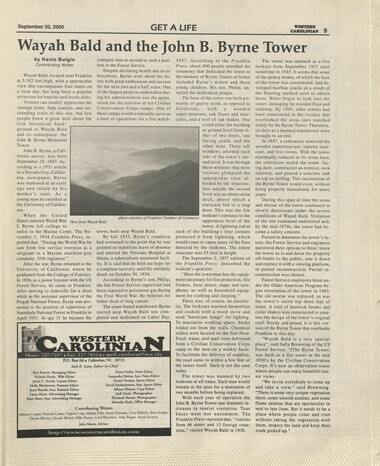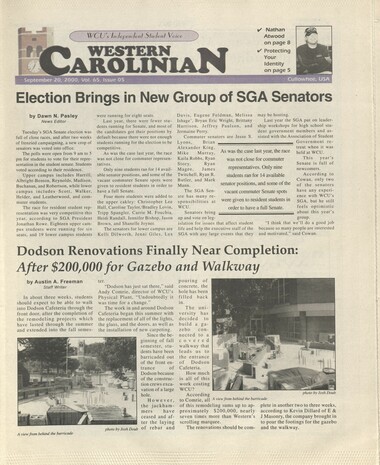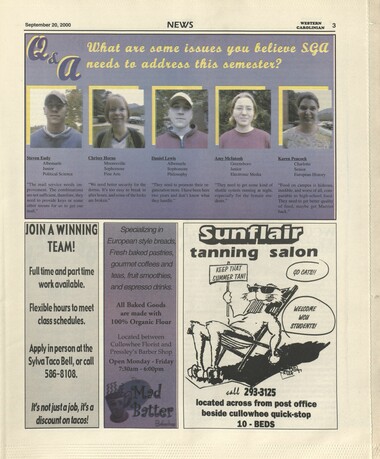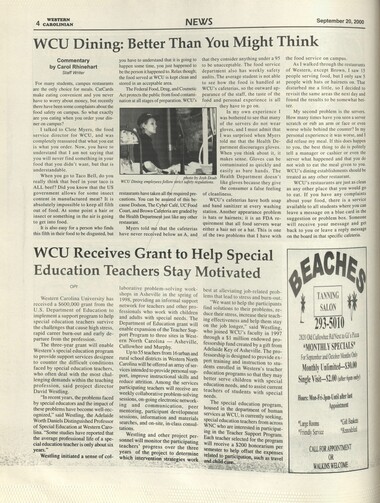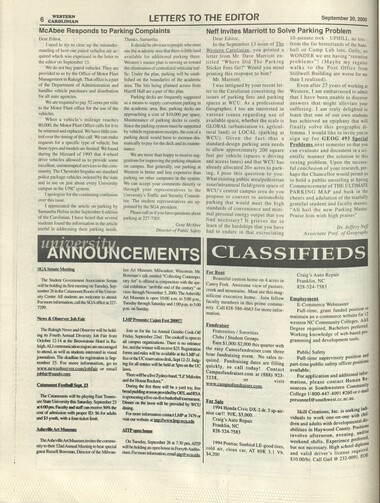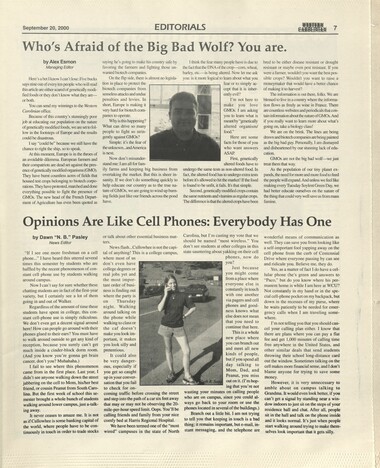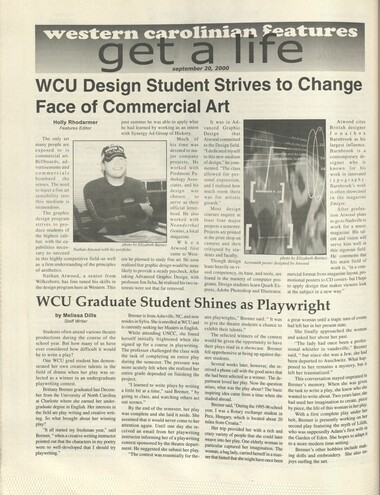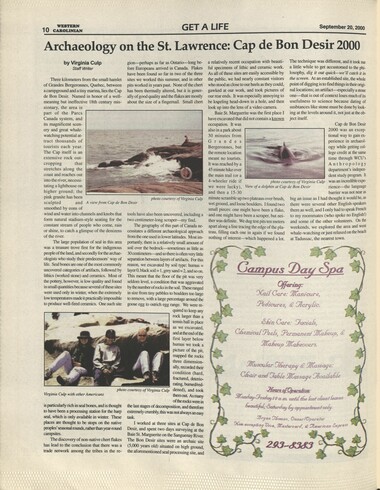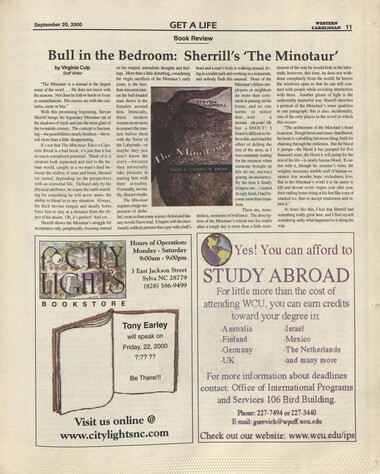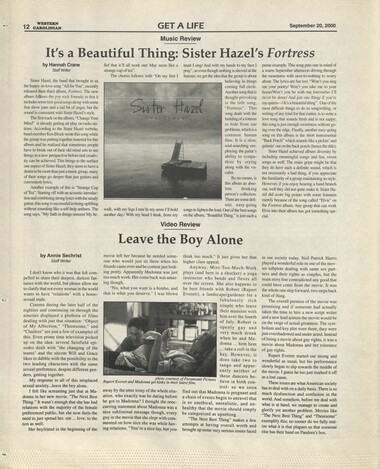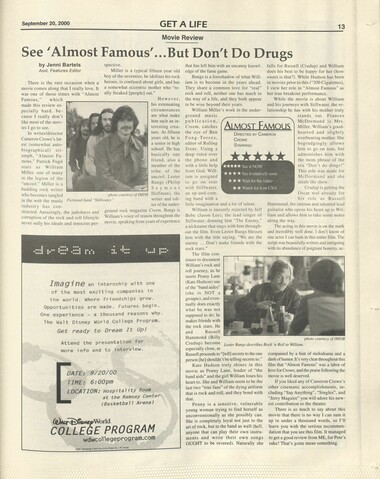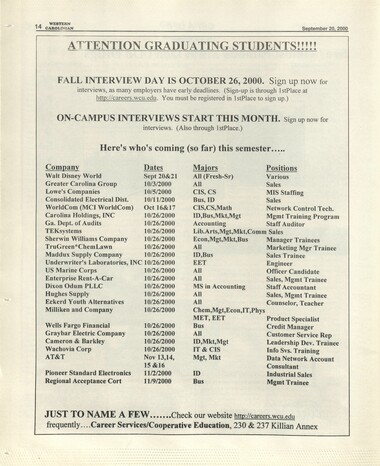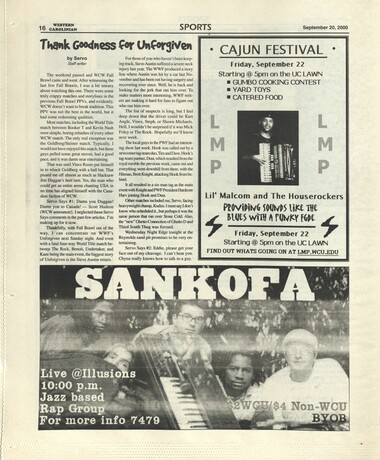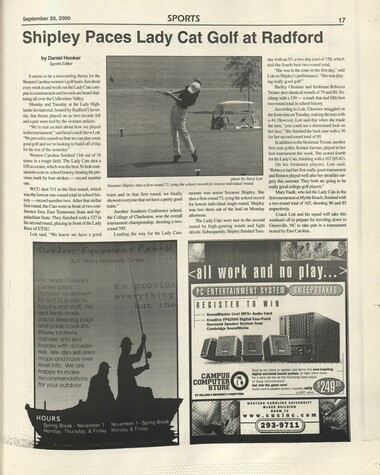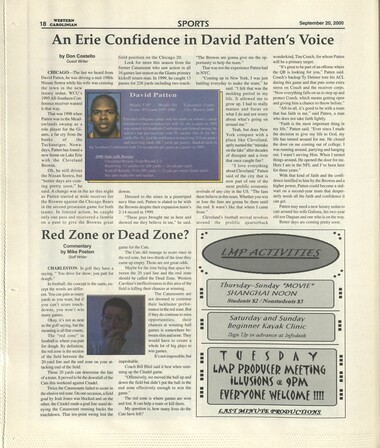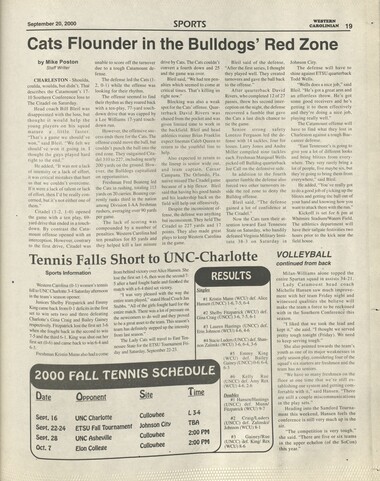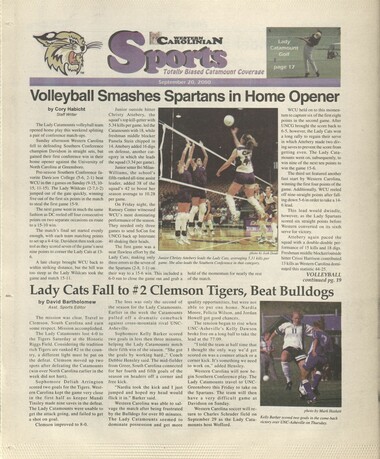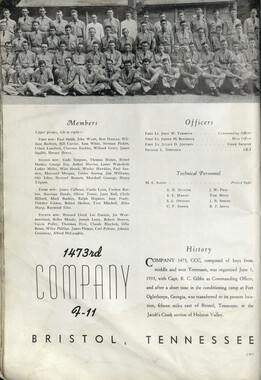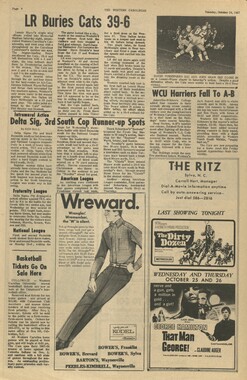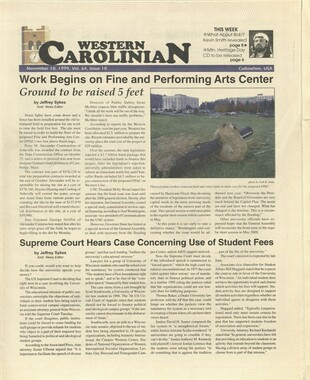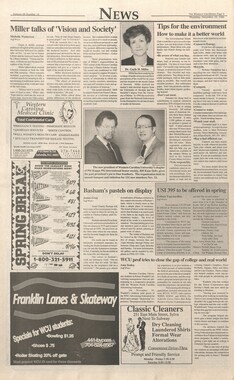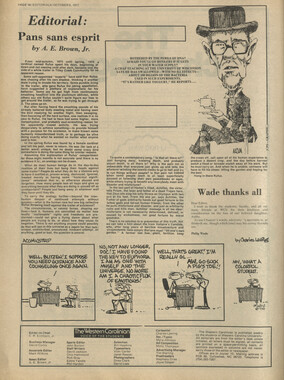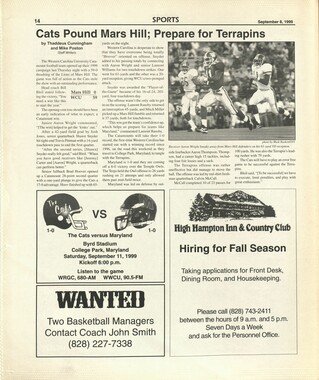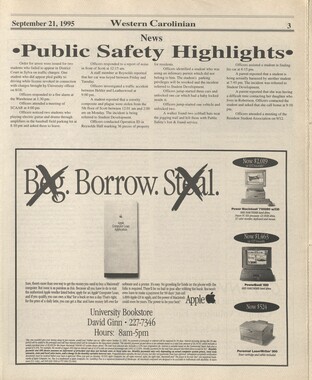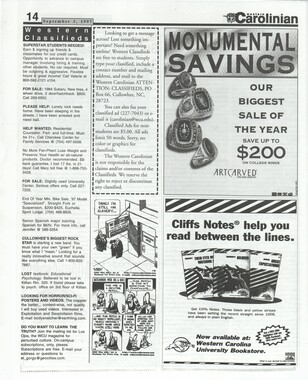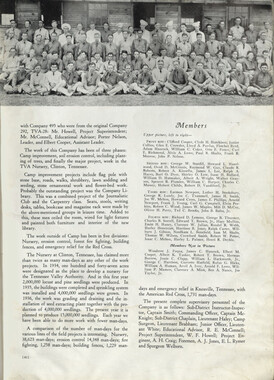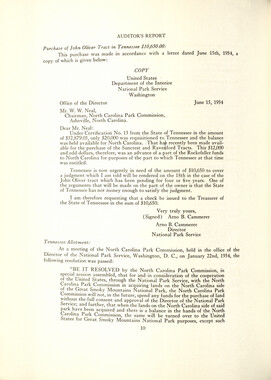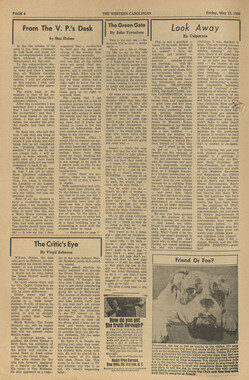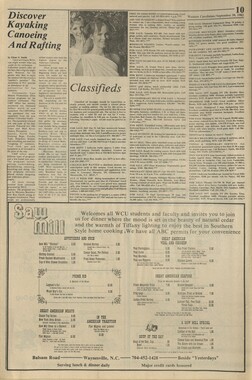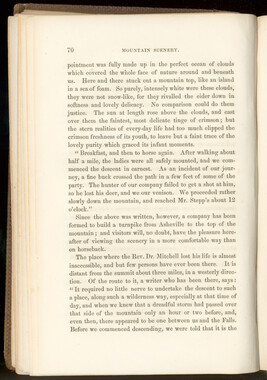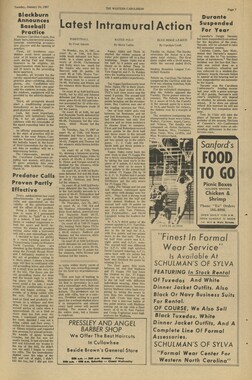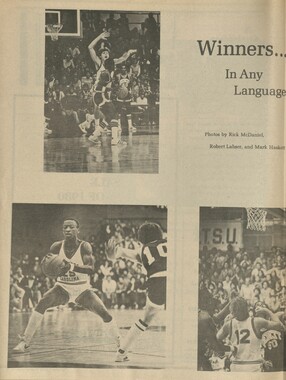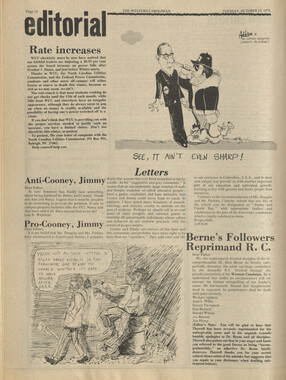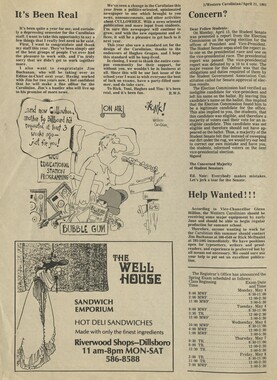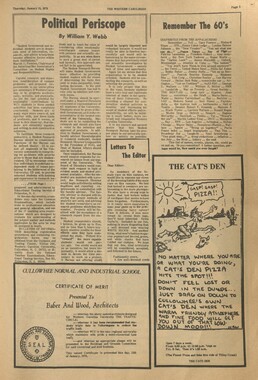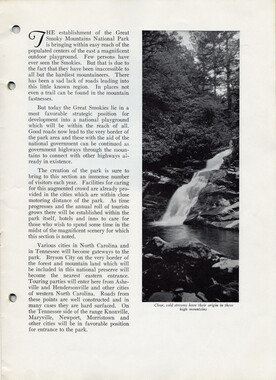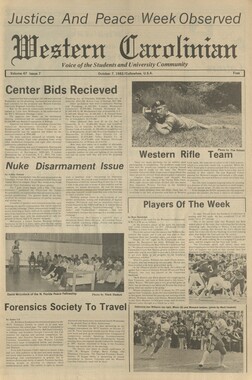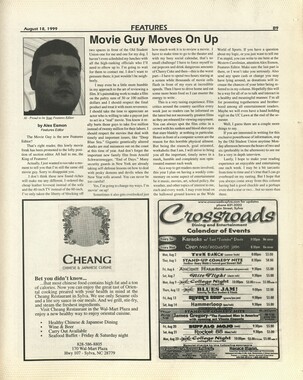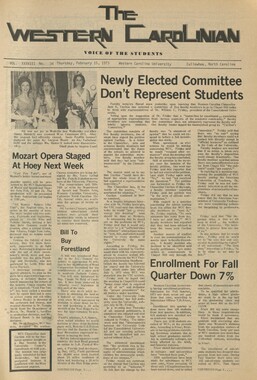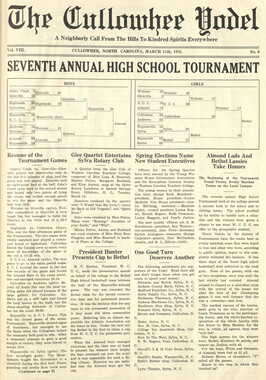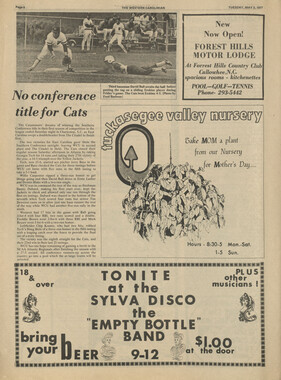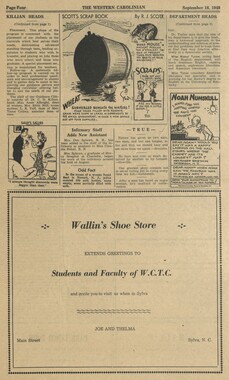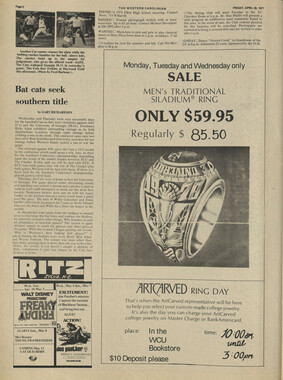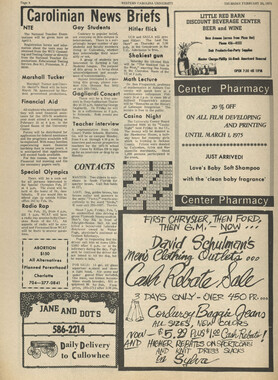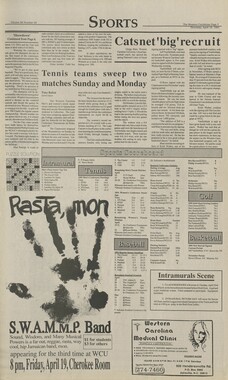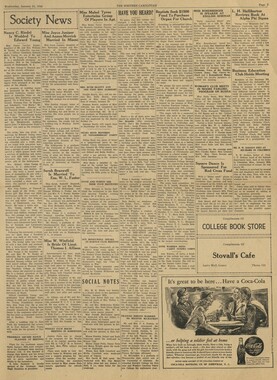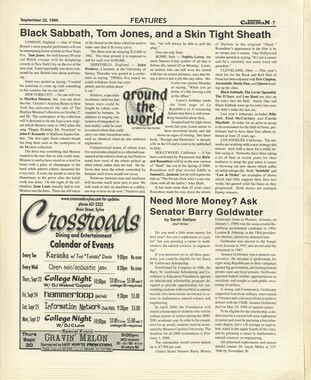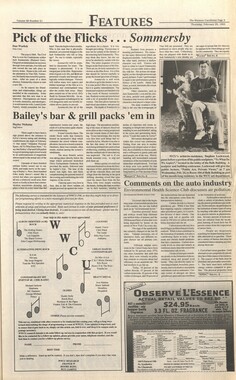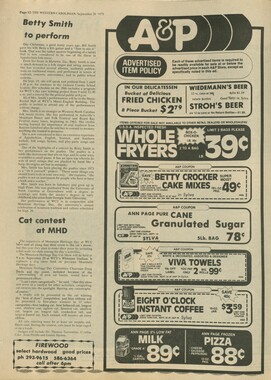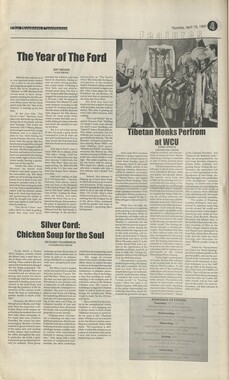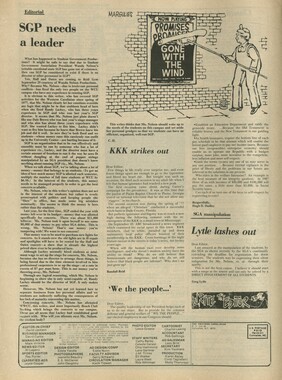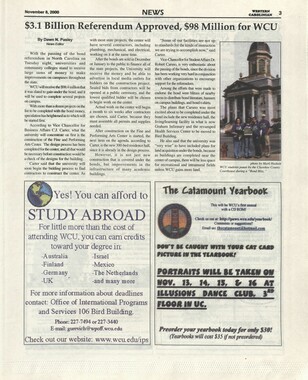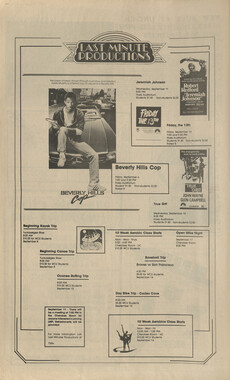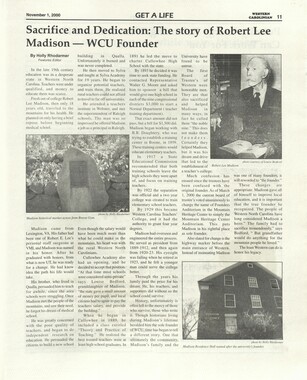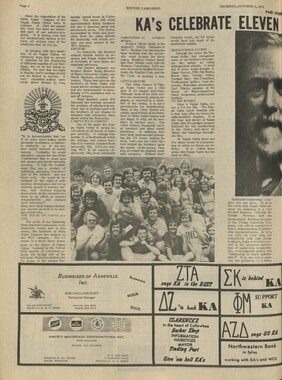Western Carolina University (20)
View all
- Canton Champion Fibre Company (2308)
- Cherokee Traditions (292)
- Civil War in Southern Appalachia (165)
- Craft Revival (1942)
- Great Smoky Mountains - A Park for America (2766)
- Highlights from Western Carolina University (430)
- Horace Kephart (941)
- Journeys Through Jackson (154)
- LGBTQIA+ Archive of Jackson County (85)
- Oral Histories of Western North Carolina (314)
- Picturing Appalachia (6772)
- Stories of Mountain Folk (413)
- Travel Western North Carolina (160)
- Western Carolina University Fine Art Museum Vitreograph Collection (129)
- Western Carolina University Herbarium (92)
- Western Carolina University: Making Memories (708)
- Western Carolina University Publications (2283)
- Western Carolina University Restricted Electronic Theses and Dissertations (146)
- Western North Carolina Regional Maps (71)
- World War II in Southern Appalachia (131)
University of North Carolina Asheville (6)
View all
- Allanstand Cottage Industries (62)
- Appalachian National Park Association (53)
- Bennett, Kelly, 1890-1974 (1388)
- Berry, Walter (76)
- Brasstown Carvers (40)
- Carver, George Washington, 1864?-1943 (26)
- Cathey, Joseph, 1803-1874 (1)
- Champion Fibre Company (233)
- Champion Paper and Fibre Company (297)
- Cherokee Indian Fair Association (16)
- Cherokee Language Program (22)
- Crowe, Amanda (40)
- Edmonston, Thomas Benton, 1842-1907 (7)
- Ensley, A. L. (Abraham Lincoln), 1865-1948 (275)
- Fromer, Irving Rhodes, 1913-1994 (70)
- George Butz (BFS 1907) (46)
- Goodrich, Frances Louisa (120)
- Grant, George Alexander, 1891-1964 (96)
- Heard, Marian Gladys (60)
- Kephart, Calvin, 1883-1969 (15)
- Kephart, Horace, 1862-1931 (313)
- Kephart, Laura, 1862-1954 (39)
- Laney, Gideon Thomas, 1889-1976 (439)
- Masa, George, 1881-1933 (61)
- McElhinney, William Julian, 1896-1953 (44)
- Niggli, Josephina, 1910-1983 (10)
- North Carolina Park Commission (105)
- Osborne, Kezia Stradley (9)
- Owens, Samuel Robert, 1918-1995 (11)
- Penland Weavers and Potters (36)
- Roberts, Vivienne (15)
- Roth, Albert, 1890-1974 (142)
- Schenck, Carl Alwin, 1868-1955 (1)
- Sherrill's Photography Studio (2565)
- Southern Highland Handicraft Guild (127)
- Southern Highlanders, Inc. (71)
- Stalcup, Jesse Bryson (46)
- Stearns, I. K. (213)
- Thompson, James Edward, 1880-1976 (226)
- United States. Indian Arts and Crafts Board (130)
- USFS (683)
- Vance, Zebulon Baird, 1830-1894 (1)
- Weaver, Zebulon, 1872-1948 (58)
- Western Carolina College (230)
- Western Carolina Teachers College (282)
- Western Carolina University (1794)
- Western Carolina University. Mountain Heritage Center (18)
- Whitman, Walt, 1819-1892 (10)
- Wilburn, Hiram Coleman, 1880-1967 (73)
- Williams, Isadora (3)
- Cain, Doreyl Ammons (0)
- Crittenden, Lorraine (0)
- Rhodes, Judy (0)
- Smith, Edward Clark (0)
- Appalachian Region, Southern (2569)
- Asheville (N.C.) (1923)
- Avery County (N.C.) (26)
- Blount County (Tenn.) (161)
- Buncombe County (N.C.) (1672)
- Cherokee County (N.C.) (283)
- Clay County (N.C.) (555)
- Graham County (N.C.) (233)
- Great Smoky Mountains National Park (N.C. and Tenn.) (519)
- Haywood County (N.C.) (3524)
- Henderson County (N.C.) (70)
- Jackson County (N.C.) (4694)
- Knox County (Tenn.) (25)
- Knoxville (Tenn.) (12)
- Lake Santeetlah (N.C.) (10)
- Macon County (N.C.) (420)
- Madison County (N.C.) (212)
- McDowell County (N.C.) (39)
- Mitchell County (N.C.) (132)
- Polk County (N.C.) (35)
- Qualla Boundary (981)
- Rutherford County (N.C.) (76)
- Swain County (N.C.) (2115)
- Transylvania County (N.C.) (270)
- Watauga County (N.C.) (12)
- Waynesville (N.C.) (84)
- Yancey County (N.C.) (72)
- Aerial Photographs (3)
- Aerial Views (60)
- Albums (books) (4)
- Articles (1)
- Artifacts (object Genre) (228)
- Bibliographies (1)
- Biography (general Genre) (2)
- Cards (information Artifacts) (38)
- Clippings (information Artifacts) (191)
- Crafts (art Genres) (622)
- Depictions (visual Works) (21)
- Design Drawings (1)
- Drawings (visual Works) (184)
- Envelopes (73)
- Facsimiles (reproductions) (1)
- Fiction (general Genre) (4)
- Financial Records (12)
- Fliers (printed Matter) (67)
- Glass Plate Negatives (381)
- Guidebooks (2)
- Internegatives (10)
- Interviews (815)
- Land Surveys (102)
- Letters (correspondence) (1013)
- Manuscripts (documents) (618)
- Maps (documents) (177)
- Memorandums (25)
- Minutes (administrative Records) (59)
- Negatives (photographs) (5835)
- Newsletters (1285)
- Newspapers (2)
- Occupation Currency (1)
- Paintings (visual Works) (1)
- Pen And Ink Drawings (1)
- Periodicals (193)
- Personal Narratives (10)
- Photographs (12976)
- Plans (maps) (1)
- Poetry (6)
- Portraits (4533)
- Postcards (329)
- Programs (documents) (151)
- Publications (documents) (2236)
- Questionnaires (65)
- Scrapbooks (282)
- Sheet Music (2)
- Slides (photographs) (402)
- Songs (musical Compositions) (2)
- Sound Recordings (796)
- Specimens (92)
- Speeches (documents) (15)
- Tintypes (photographs) (8)
- Transcripts (322)
- Video Recordings (physical Artifacts) (23)
- Vitreographs (129)
- Text Messages (0)
- A.L. Ensley Collection (275)
- Appalachian Industrial School Records (7)
- Appalachian National Park Association Records (336)
- Axley-Meroney Collection (2)
- Bayard Wootten Photograph Collection (20)
- Bethel Rural Community Organization Collection (7)
- Blumer Collection (5)
- C.W. Slagle Collection (20)
- Canton Area Historical Museum (2110)
- Carlos C. Campbell Collection (282)
- Cataloochee History Project (64)
- Cherokee Studies Collection (4)
- Daisy Dame Photograph Album (5)
- Daniel Boone VI Collection (1)
- Doris Ulmann Photograph Collection (112)
- Elizabeth H. Lasley Collection (1)
- Elizabeth Woolworth Szold Fleharty Collection (4)
- Frank Fry Collection (95)
- George Masa Collection (173)
- Gideon Laney Collection (452)
- Hazel Scarborough Collection (2)
- Hiram C. Wilburn Papers (28)
- Historic Photographs Collection (236)
- Horace Kephart Collection (861)
- Humbard Collection (33)
- Hunter and Weaver Families Collection (1)
- I. D. Blumenthal Collection (4)
- Isadora Williams Collection (4)
- Jesse Bryson Stalcup Collection (47)
- Jim Thompson Collection (224)
- John B. Battle Collection (7)
- John C. Campbell Folk School Records (80)
- John Parris Collection (6)
- Judaculla Rock project (2)
- Kelly Bennett Collection (1407)
- Love Family Papers (11)
- Major Wiley Parris Civil War Letters (3)
- Map Collection (12)
- McFee-Misemer Civil War Letters (34)
- Mountain Heritage Center Collection (4)
- Norburn - Robertson - Thomson Families Collection (44)
- Pauline Hood Collection (7)
- Pre-Guild Collection (2)
- Qualla Arts and Crafts Mutual Collection (12)
- R.A. Romanes Collection (681)
- Rosser H. Taylor Collection (1)
- Samuel Robert Owens Collection (94)
- Sara Madison Collection (144)
- Sherrill Studio Photo Collection (2558)
- Smoky Mountains Hiking Club Collection (616)
- Stories of Mountain Folk - Radio Programs (374)
- The Reporter, Western Carolina University (510)
- Venoy and Elizabeth Reed Collection (16)
- WCU Gender and Sexuality Oral History Project (32)
- WCU Mountain Heritage Center Oral Histories (25)
- WCU Oral History Collection - Mountain People, Mountain Lives (71)
- WCU Students Newspapers Collection (1744)
- Western North Carolina Tomorrow Black Oral History Project (69)
- William Williams Stringfield Collection (2)
- Zebulon Weaver Collection (109)
- African Americans (390)
- Appalachian Trail (35)
- Artisans (521)
- Cherokee art (84)
- Cherokee artists -- North Carolina (10)
- Cherokee language (21)
- Cherokee pottery (101)
- Cherokee women (208)
- Church buildings (170)
- Civilian Conservation Corps (U.S.) (110)
- College student newspapers and periodicals (1830)
- Dams (107)
- Dance (1023)
- Education (222)
- Floods (61)
- Folk music (1015)
- Forced removal, 1813-1903 (2)
- Forest conservation (220)
- Forests and forestry (1184)
- Gender nonconformity (4)
- Great Smoky Mountains National Park (N.C. and Tenn.) (181)
- Hunting (38)
- Landscape photography (25)
- Logging (118)
- Maps (83)
- Mines and mineral resources (8)
- North Carolina -- Maps (18)
- Paper industry (38)
- Postcards (255)
- Pottery (135)
- Railroad trains (71)
- Rural electrification -- North Carolina, Western (3)
- School integration -- Southern States (2)
- Segregation -- North Carolina, Western (5)
- Slavery (5)
- Sports (452)
- Storytelling (244)
- Waterfalls -- Great Smoky Mountains (N.C. and Tenn.) (66)
- Weaving -- Appalachian Region, Southern (280)
- Wood-carving -- Appalachian Region, Southern (328)
- World War, 1939-1945 (173)
Western Carolinian Volume 65 (66) Number 05
Item
Item’s are ‘child’ level descriptions to ‘parent’ objects, (e.g. one page of a whole book).
-
-
September 20, 2000 GET A LIFE WESTERN CAROLINIAN Wayah Bald and the John B. Byrne Tower by Kevin Bulgin Contributing Writer Wayah Bald, located near Franklin at 5,342 feet high, with a spectacular view that encompasses four states on a clear day, has long been a popular attraction for tourists and locals alike. Visitors can readily appreciate the vantage point, June azaleas, and surrounding trails of this site, but few people know a great deal about the rich historical background of Wayah Bald and its centerpiece: the John B. Byrne Memorial Tower. John B. Byrne, a California native, was born September 29, 1897. According to a 1931 article in a Nevada City, California, newspaper, Byrne was orphaned at an early age and raised by his mother's aunt. As a young man he enrolled at the University of California. When the United States entered World War View from Wayah Bald I, Byrne left college to enlist in the Marine Corps. The November 1, 1934 Franklin Press, reported that, "During the World War he saw front line service overseas as a sergeant in a Marine machine-gun company, fifth regiment." After the war, Byrne returned to the University of California, where he graduated from the College of Forestry. In 1926, as a junior forester with the US Forest Service, he came to Franklin. After moving to Asheville for a short while as the assistant supervisor of the Pisgah National Forest, Byrne was promoted to the position of supervisor of Nantahala National Forest in Franklin in April 1931. At age 31 he became the youngest man to ascend to such a position in the Forest Service. -Despite declining health due to tuberculosis, Byrne went about his duties with great enthusiasm and success for the next two and a half years. One of the largest projects undertaken during his administration was the preparation for the erection of ten Civilian Conservation Corps camps. One of these camps would eventually serve as a base of operations for a fire watch- photo courtesy of Franklin Chamber of Commerce tower, built atop Wayah Bald. By fall 1933, Byrne's condition had worsened to the point that he was granted an indefinite leave of absence and entered the Veterans Hospital at Oteen, a tuberculosis treatment facility. It is said that he held out hope for a complete recovery until his untimely death on October 30, 1934. According to Byrne's son, Philip, the late Forest Service supervisor had been exposed to poisonous gas during the First World War. He believes his father died of lung cancer. The stone-based watchtower Byrne started atop Wayah Bald was completed and dedicated on Labor Day, m ■■;■.-■ WW WESTERN Phone: 227-: AROLINIA 227-7043 • e-mail: carolinian("',wcu.edu RO. Box 66 • Cullowhee, NC 28723 Seth R. Sams, Editor-in-Chief Alex Esmon, Managing Editor Dawn Pasley, News Mitor Nicholc Hardy, Web Editor Samantha Helms, Asst. News Editor Javier C. Arvelo, Layout Editor Daniel Hooker, Sports Editor Holly Rhodarmer, Features Editor David Bartholomew, Asst. Sports Editor Jenni Barrels, Asst. Features Editor Allison Hinson, Copy Editor Laura Hyatt, Advertising Manager Josh Doub, Photographer Matt Short, Asst. Advertising Manager Elizabeth Barnes, Photographer Miranda Hyde, Office Manager Contributing Writers Melanie Cooper. Hannah Crane, Virginia Culp, Melissa Dills, Austin Freeman, Cory Habicht, Brett Knight, Denise Merritt, Johnnie Mickel, Mike Poston, Carol Rhinehart, Matt Rogers, Annie Sechnst John Moore, Advisor Carolinian.com 1937. According to the Franklin Press, about 400 people attended the ceremony that dedicated the tower to the memory of Byrne. Guests of honor included Byrne's widow and three young children. His son, Philip, unveiled the dedication plaque. The base of the tower was built primarily of quarry stone, as opposed to fieldstone, with a wooden super-structure, oak floors and staircases, and a roof of oak shakes. One could enter the building at ground level from either of two doors, one facing south, and the other west. Three tall windows adorned each side of the tower's second level. It was through these windows that most visitors glimpsed the spectacular view afforded by the structure. Just outside the second level was an observation deck, above which a staircase led to a trap door. This was the fire lookout's entrance to the uppermost level of the tower. A lightning rod at each of the building's four corners protected it from lightning, which would come to cause many of the fires detected by the lookouts. The entire structure was 53 feet in height. The September 2, 1937 edition of the Franklin Press described the lookout's quarters: "Here the towerman has the equipment necessary for fire protection, fire finders, haze meter, maps and telephone, as well as household equipment for cooking and sleeping." There was, of course, no electricity. The lookouts warmed themselves and cooked with a wood stove and used "hurricane lamps" for lighting. To maximize working space, bunks folded out from the walls. Chemical toilets were located on the first floor. Food, water, and mail were delivered from a Civilian Conservation Corps camp to the men on a weekly basis. To facilitate the delivery of supplies, the road came to within a few feet of the tower itself. Such is not the case today. The tower was manned by two lookouts at all times. Each man would remain at the post for a maximum of two months before being replaced. With each year of operation the John B. Byrne Tower saw dramatic increases in tourist visitation. Tour buses were not uncommon. The Franklin Press reported that, "visitors from 46 states and 13 foreign countries," visited Wayah Bald in 1936. The tower was manned as a fire lookout from September 1937 until sometime in 1945. It seems that some of the quarry stones, of which the base of the tower was constructed, had developed hairline cracks as a result of the blasting method used to obtain them. Water began to leak into the tower, damaging the wooden floor and stairway. By 1945, other towers had been constructed in the vicinity that overlooked the areas once watched solely by the Byrne Tower. Therefore, its days as a manned watchtower were brought to an end. In 1947, a contractor removed the wooden superstructure, interior staircase, and rest rooms. With the tower essentially reduced to its stone base, the contractor sealed the south- facing door, constructed an exterior, rock stairway, and poured a concrete slab on top as roofing. This incarnation of the Byrne Tower would exist, without being properly maintained, for many years. During this span of time the stone and mortar of the tower continued to slowly deteriorate under the severe conditions of Wayah Bald. Visitation of the site continued undeterred and, by the mid-1970s, the tower had become a safety concern. Forced to determine the tower's future, the Forest Service and engineers narrowed their options to three: leave the tower as is and deem the property off-limits to the. public, tear it down and replace it with a viewing platform, or partial reconstruction. Partial reconstruction was chosen. Forest Service employees hired under the Older American Program began restoration .of the tower in 1983. The old mortar was replaced, as was the tower's entire top three feet of stone. A roof of hemlock beams and cedar shakes was constructed to emulate the design of the tower's original roof. Sturdy and proud, it is this version of the Byrne Tower that overlooks Franklin to this day. "Wayah Bald is a very special place", said Sally Browning of the US Forest Service. "[The Byrne Tower] was built as a fire tower in the mid 1930's by the Civilian Conservation Corps. It's now an observation tower where people can enjoy beautiful scenic views. "We invite everybody to come up and take a view," said Browning. "There is some very unique vegetation there, some smooth azaleas, and some flame azaleas that are spectacular in mid to late June. But it needs to be a place where people come and visit without taking the vegetation with them, respect the land and keep their trash picked up."
Object
Object’s are ‘parent’ level descriptions to ‘children’ items, (e.g. a book with pages).
-
The Western Carolinian is Western Carolina University's student-run newspaper. The paper was published as the Cullowhee Yodel from 1924 to 1931 before changing its name to The Western Carolinian in 1933.
-
